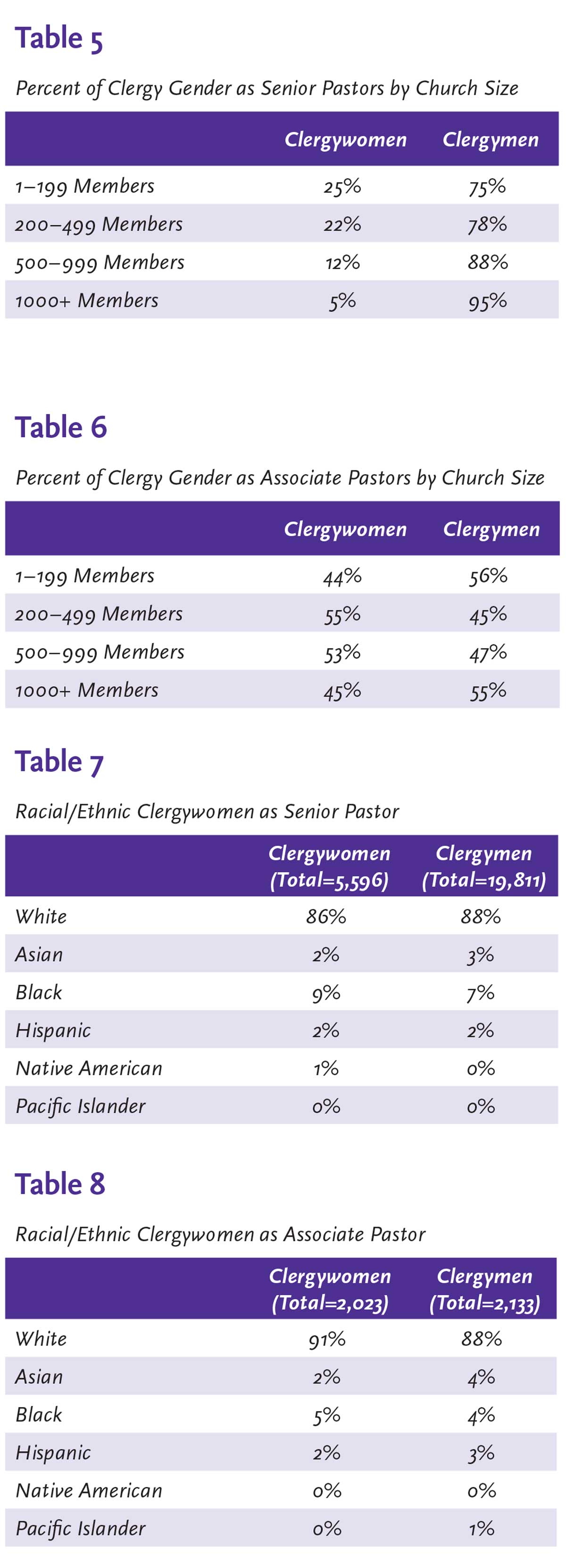By Craig this
Of those clergypersons serving local churches in the United States, 26% are clergywomen and 74% are clergymen (see Table 1).
In other words, 1 in 4 churches is served by a clergywoman. Of the 7,619 clergywomen who serve in the local church, only 814, or 14%, are racial/ethnic women (see Table 2). That means 1 in 10 clergywomen serving a local church is a racial/ethnic clergywoman. At first glance, that seems like a pretty good ratio. However, looking deeper, statistics show that only 3 out of every 100 churches are served by a racial/ethnic clergywoman. At the same time, 3 out of every 4 churches are served by a clergyman, regardless of race.
A Clearer View: Where Do Racial/Ethnic Clergywomen Serve?
Clergywomen, according to the percentages, serve equally in the various church sizes. Table 3 shows that one-quarter of each of the four church sizes is served by clergywomen. However, the numbers drop precipitously for racial/ethnic clergywomen. Fourteen percent (14%) of small churches (1–199 members) are served by racial/ethnic clergywomen, but that is as good as it gets for racial/ethnic clergywomen. Although 30% of churches with 1,000 or more members are served by clergywomen, only 6% of churches with 1,000 or more members is served by racial/ethnic clergywomen (see Table 4).
The View Gets Dim: Racial/Ethnic Clergywomen by Clergy Status
The distribution of clergywomen serving in local churches gets more dismal when the data are broken down by clergy status—senior or associate pastor. Clergywomen serving as senior pastors dropped in all four church sizes except the 1–199 members (see Table 5). Their numbers, however, do increase as associate pastors (see Table 6).
When the data are analyzed for senior pastors and associate pastors, the numbers are not at all kind to racial/ethnic clergywomen. Only African-American clergywomen show somewhat respectable numbers, but in both roles—senior pastor or associate pastor— the percentages are less than 10% (see Tables 7 and 8).
The data could be sorted by clergy status, by racial/ ethnic designation, and by church size, but the distribution would become ridiculously small. And that in itself is a statement. It is telling that The United Methodist Church, with nearly 8.5 million members and 30,000 churches across the United States, has only 814 racial/ethnic clergywomen to reach out to a nation whose population is 30% racial/ethnic.



Conclusion
Some will see this data and say, “So what? The racial/ethnic clergywomen percentage matches the percentage of racial/ethnic church members. The United Methodist Church is based on proportional representation. Everything looks fine to me!”
But it isn’t! Sociologists of religion have noted that many mainline Protestant denominations, like The United Methodist Church, which are predominantly white, suburban, and middle class, have sought to reverse their decline by fostering congregations among Asian, Black, Hispanic, Native American, and Pacific Islander constituencies in the United States.
